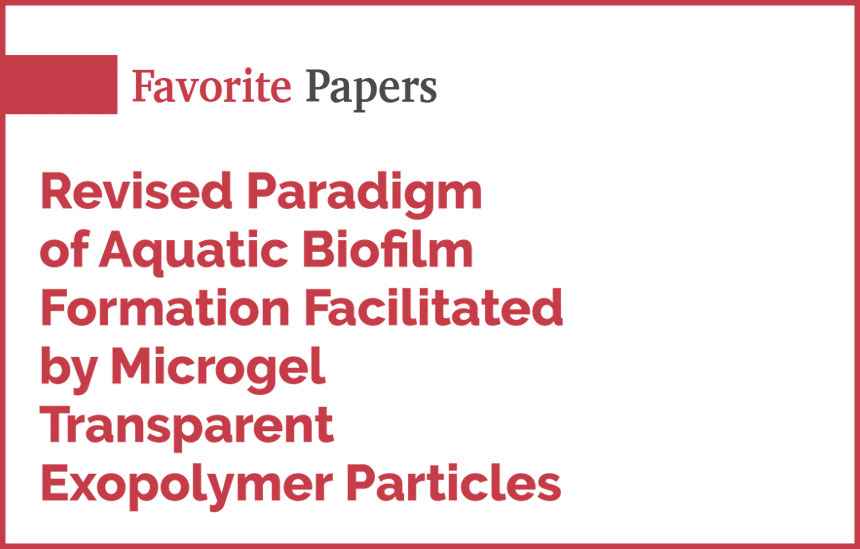Published on IDRA Global Connections Winter 2021 Issue
Edo Bar-Zeev, Iliana Berman-Frank, Olga Gershevitz and Tom Berman, Proceedings of National Academy of Sciences, Vol 109, June 5, 2012, 9119-9124.
Nominated by: Harvey Winters, Ph.D. Department of Biological Sciences Fairleigh Dickinson University harvey@fdu.edu
This paper by Edo Bar-Zeev and co-authors proposed for the first time the term “protobiofilm” to represent a planktonic (free-floating) biofilm precursor before its attachment to a surface, like a reverse osmosis (RO) membrane. They further stated that the development of a protobiofilm, which is a complex of extracellular polymeric substances (EPS), like transparent exopolymer particles (TEP) with extensive
microbial attachment, would jump-start biofilm development. The type of EPS in the protobiofilm, as suggested in the paper, was that of TEPs that were detected with use of a dye, alcian blue, which interacts with any organic substance that contains carboxyl or sulfated groups. This was the first time that someone had suggested that biofilms actually begins as a planktonic entity. This new paradigm intrigued me as neither my biofilm colleagues nor I had previously ever thought that biofilm formation actually began as a planktonic precursor to the attached biofilm.
For the last decade, TEP had been a serious topic for discussion as the source of biofilm formation on RO membranes since Tom Berman first introduced its concept. Since alcian blue is not specific for just TEP, it appears that Bar-Zeev and co-authors may have been implicating protobiofilms, rather than TEP, as the main cause of membrane biofouling. Protobiofilms and biofilms share common characteristics, except protobiofilms, are planktonic and biofilms attach to surfaces. The presence of protobiofilms in all types of RO feed water emphasizes their importance in enhancing the degree of biofilm formation.
The formation of protobiofilms suggests that it develops as bacterial aggregates, which are immersed in an EPS matrix, while in a planktonic
state. Aggregation of bacteria, even between different strains, is a topic that I never lectured about in my 50 years of teaching at the university level. Yet, as I researched this topic, it became apparent to me that most bacteria in nature exist in an aggregated state and this could promote quorum sensing among the aggregated cells and thus make the aggregate more likely to attach to a membrane surface.
Knowing that a membranen biofilm may begin as a protobiofilm from precursors has allowed myself to investigate its inhibition in a different
light. While this paper had focused on just TEP as the important biofouling agent, it has allowed me to see a bigger picture of membrane
biofouling in a world of many different aggregated bacteria and EPS matrices, not just TEP.




